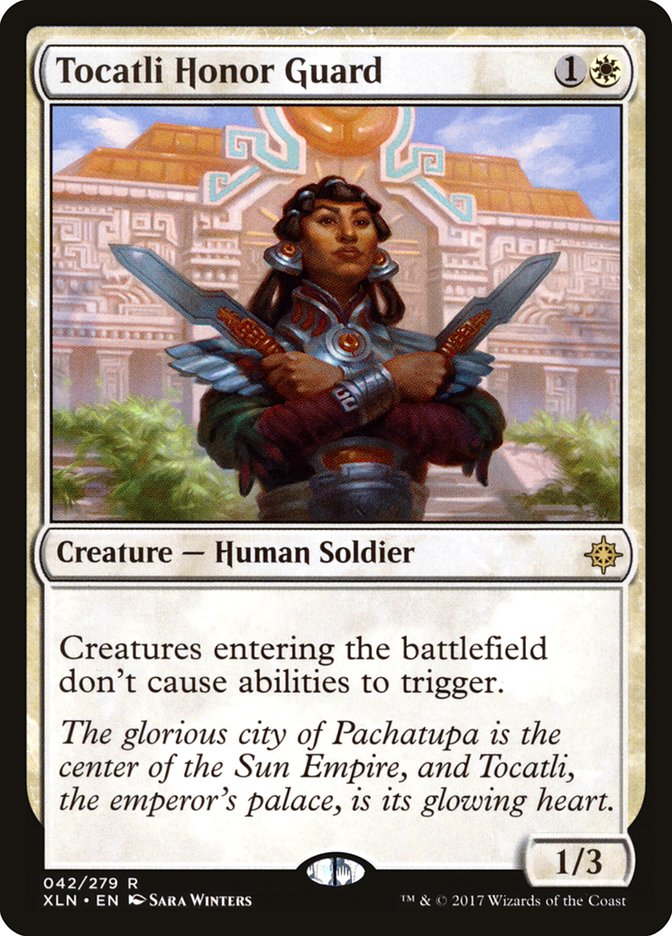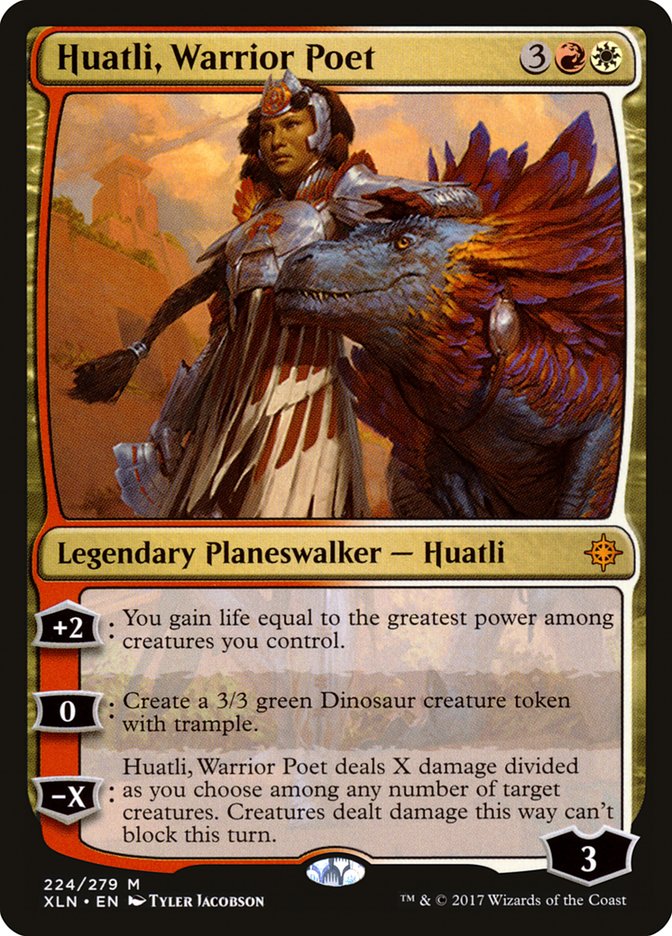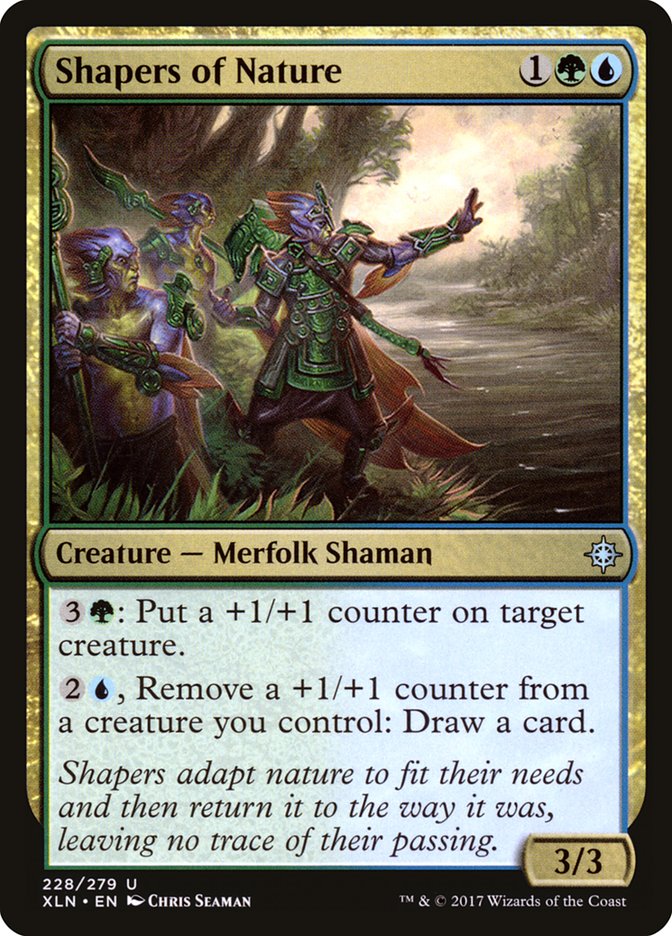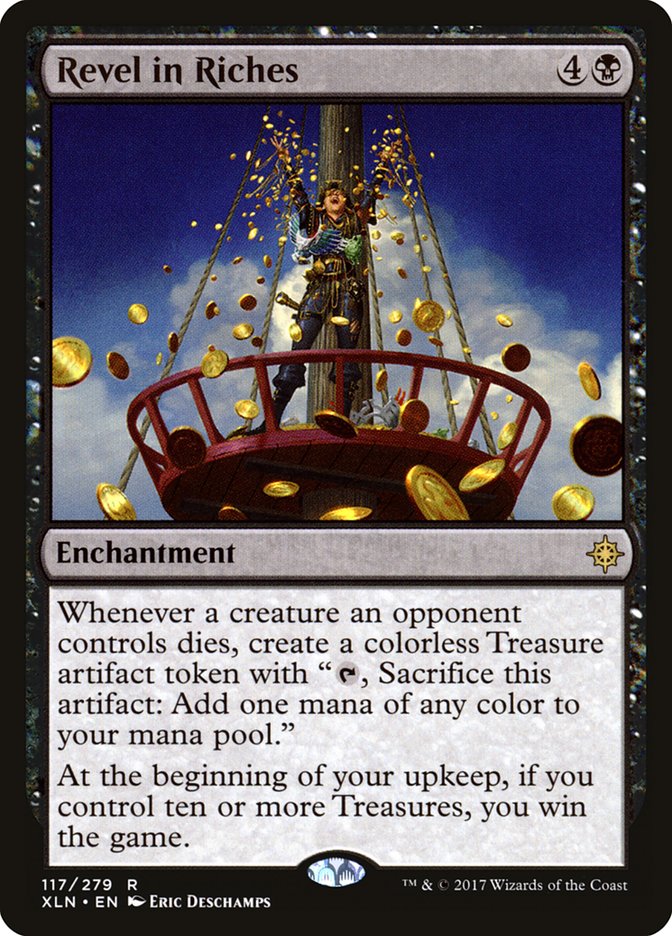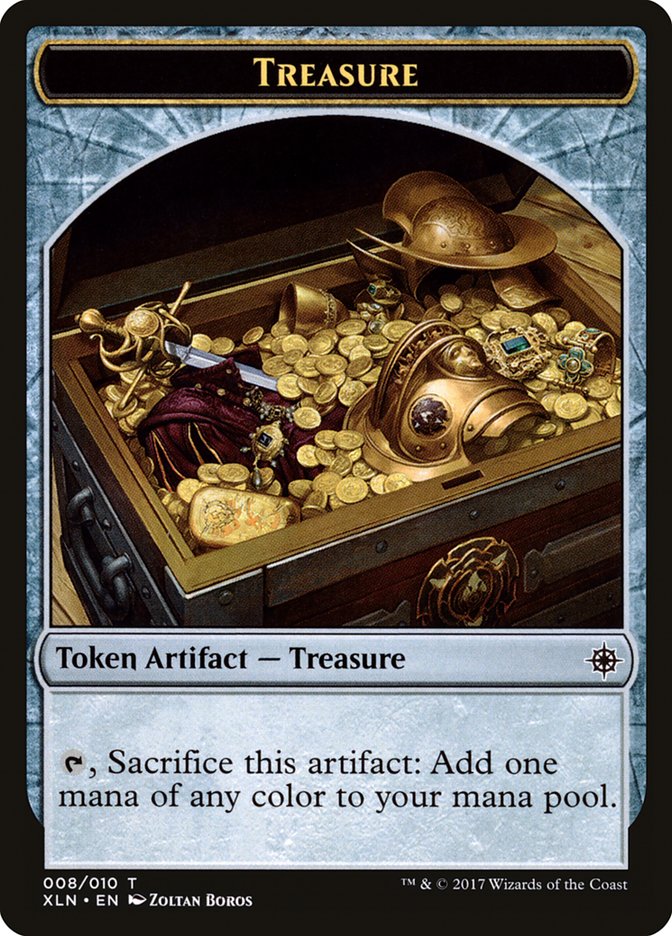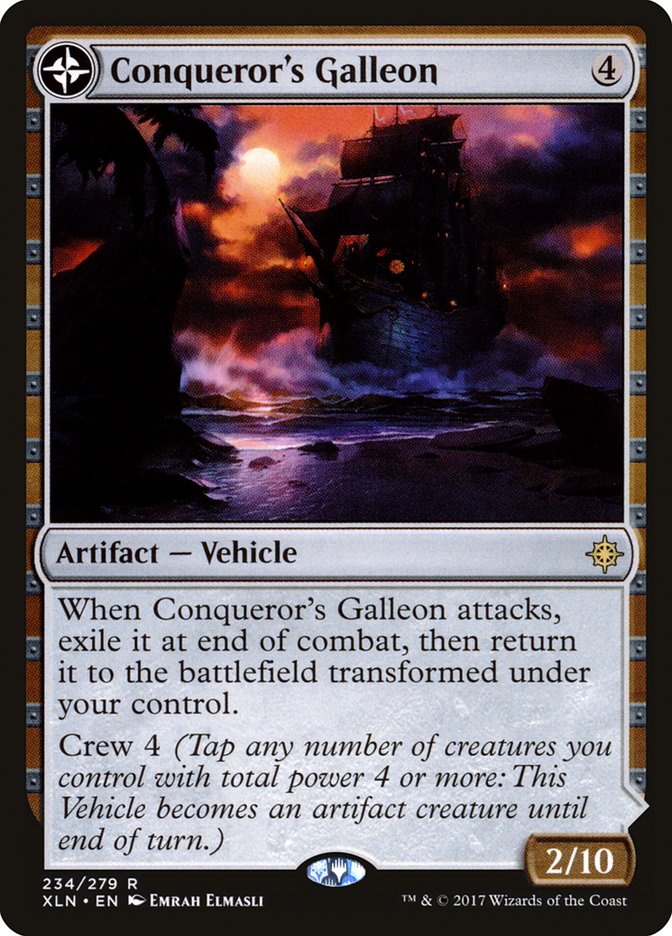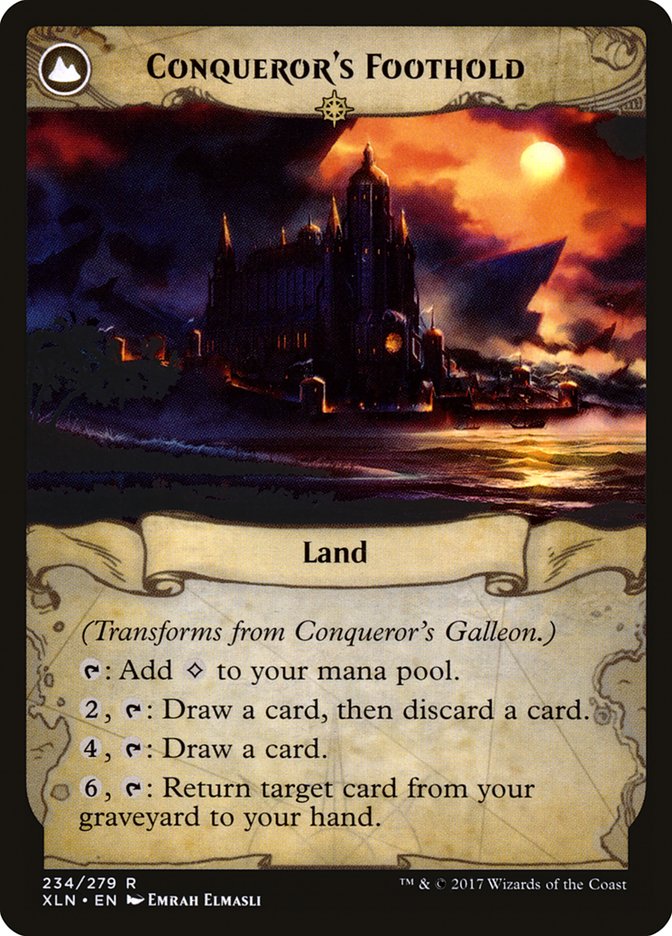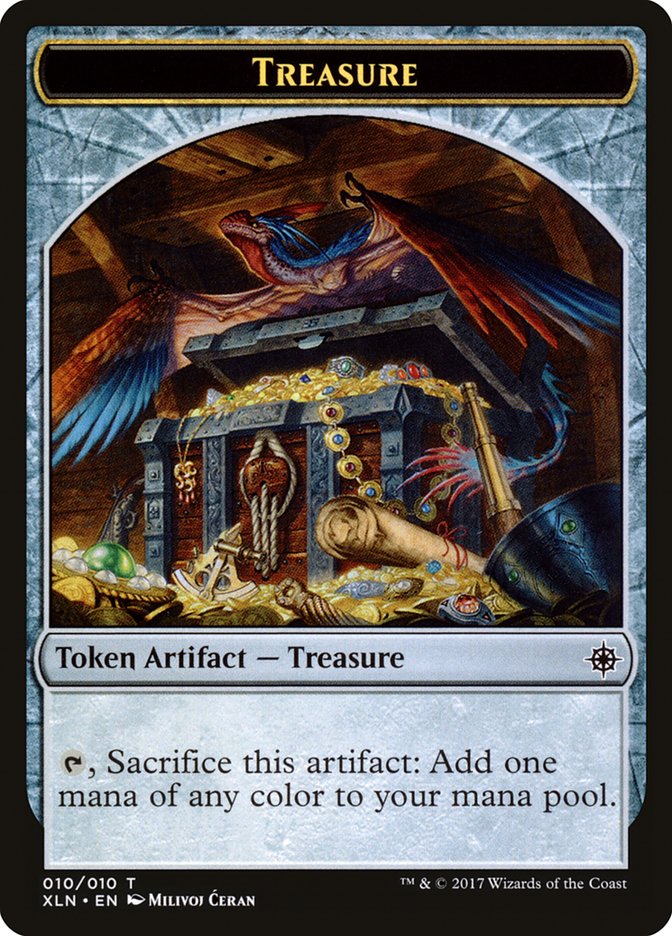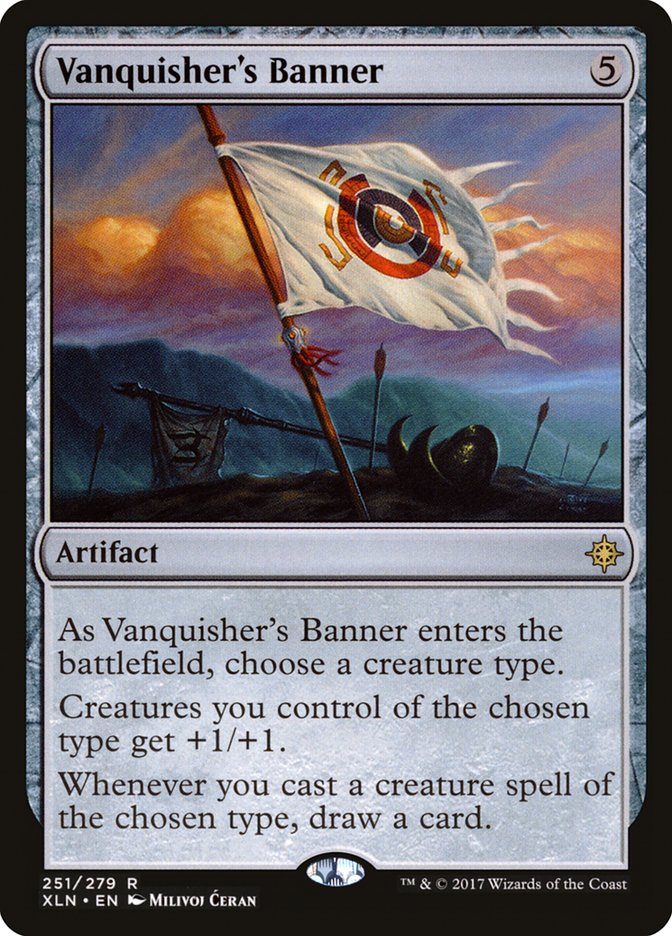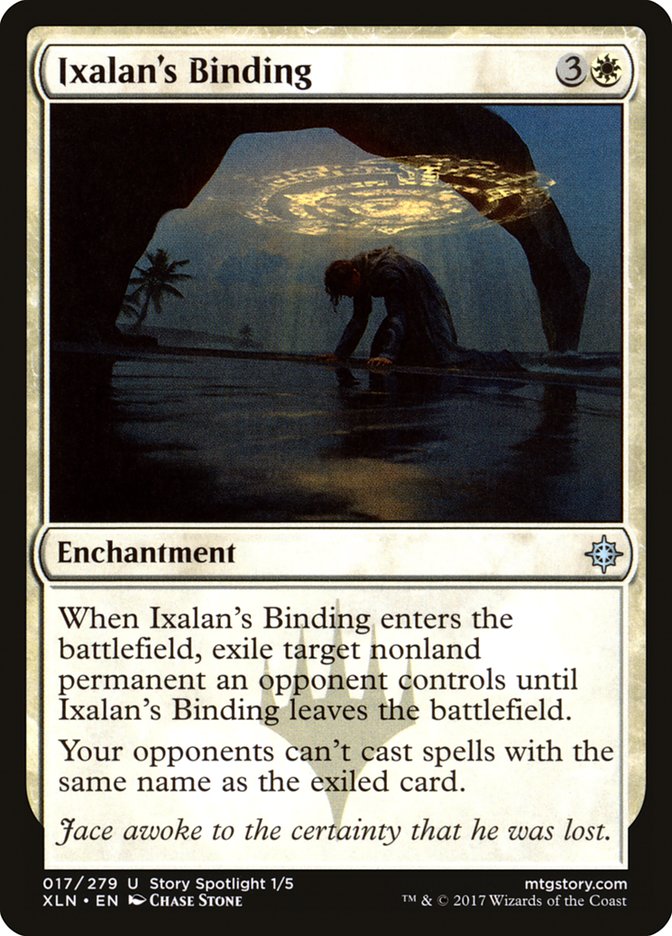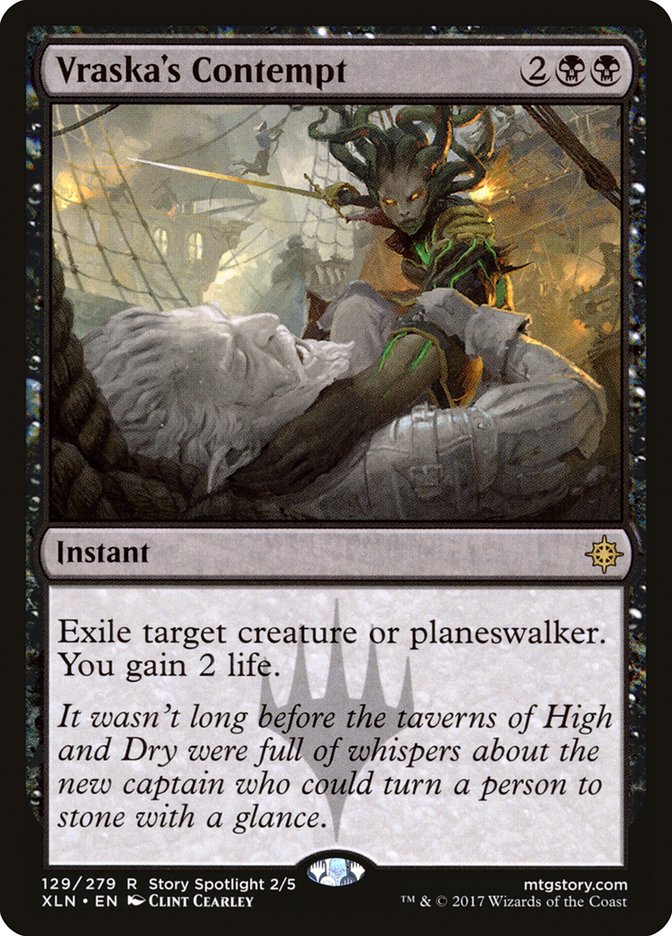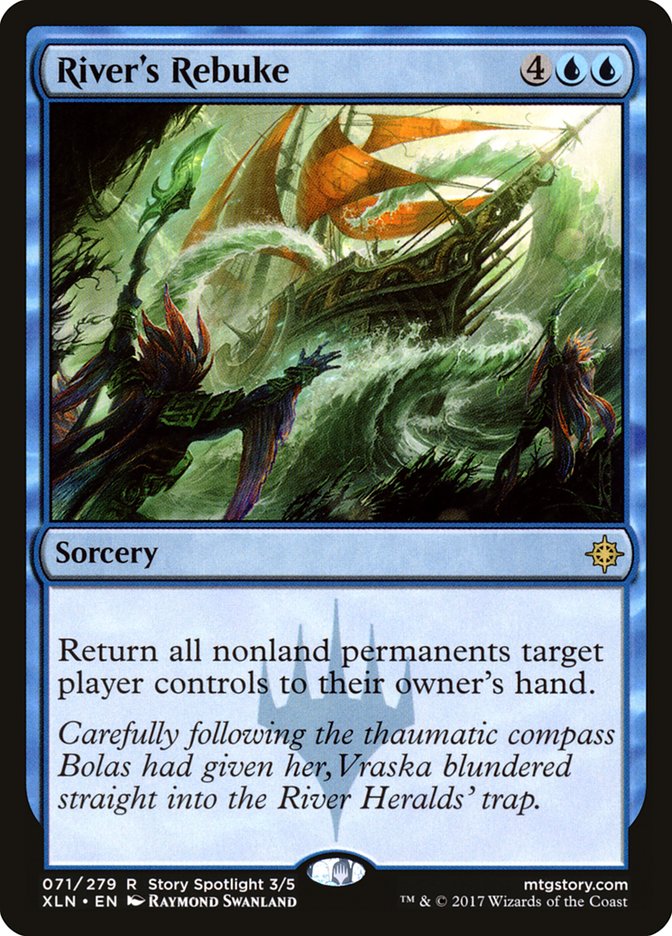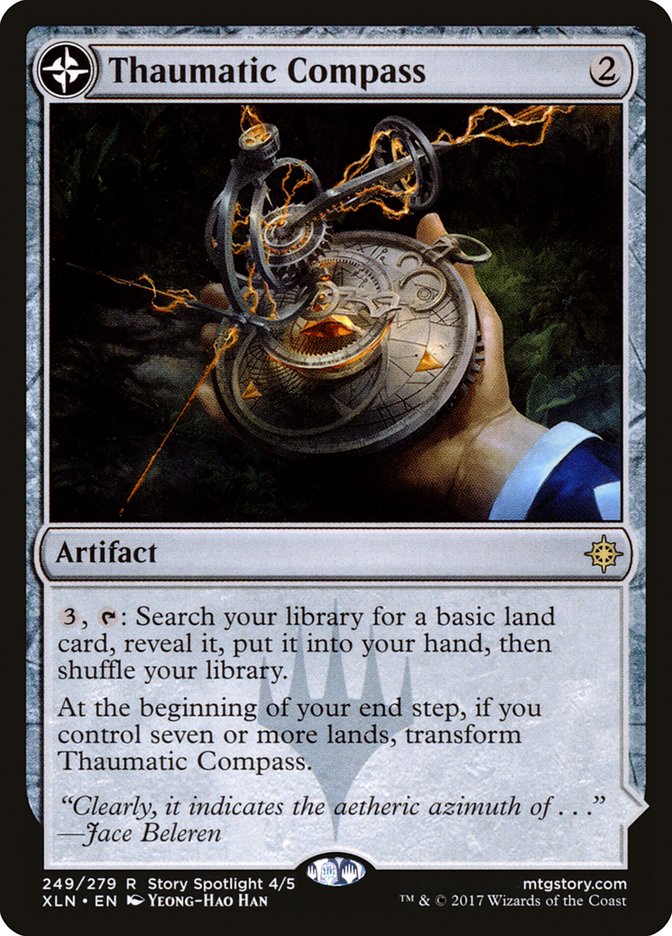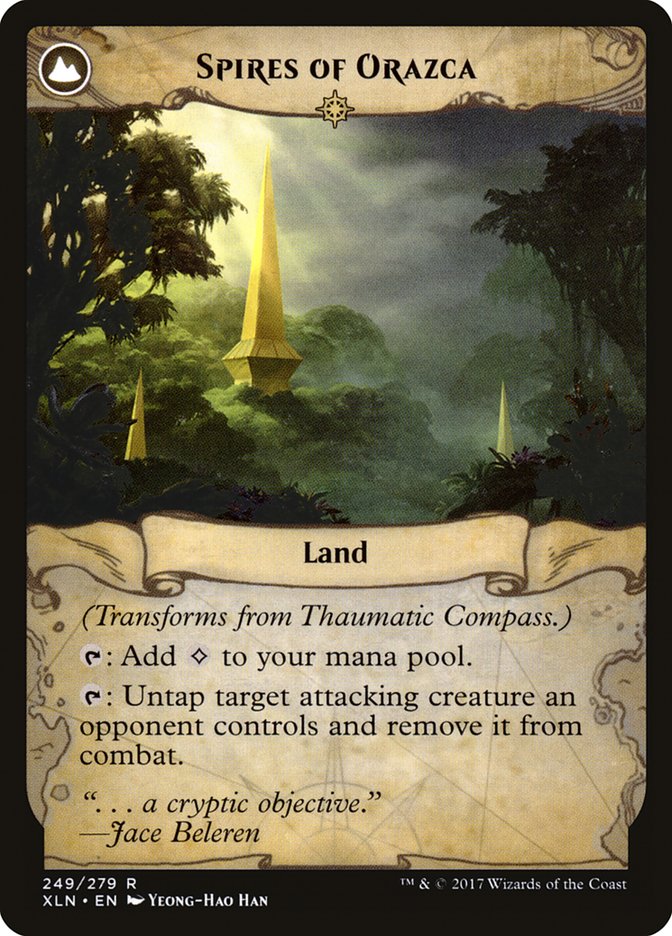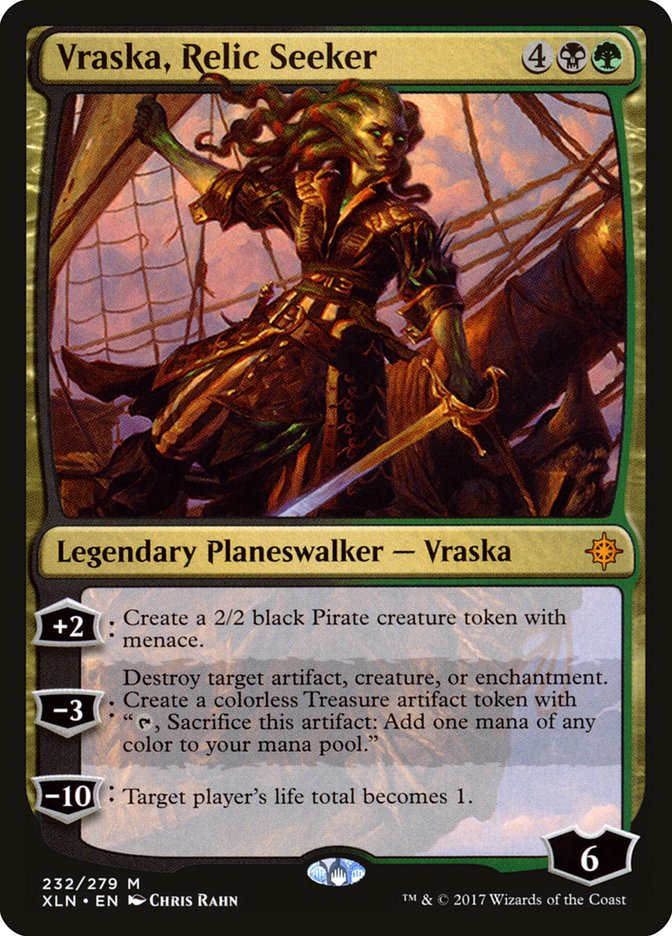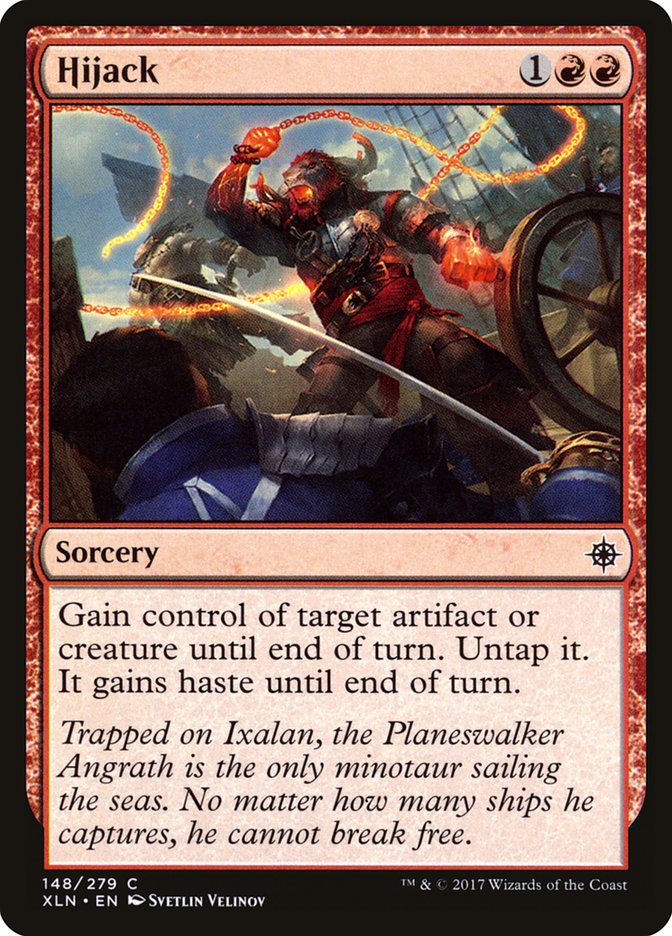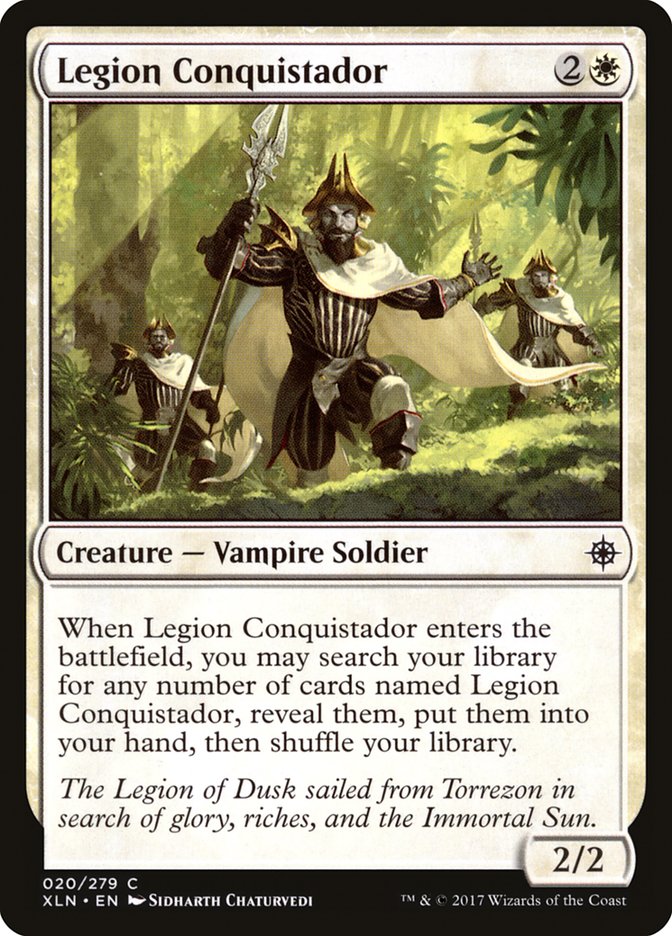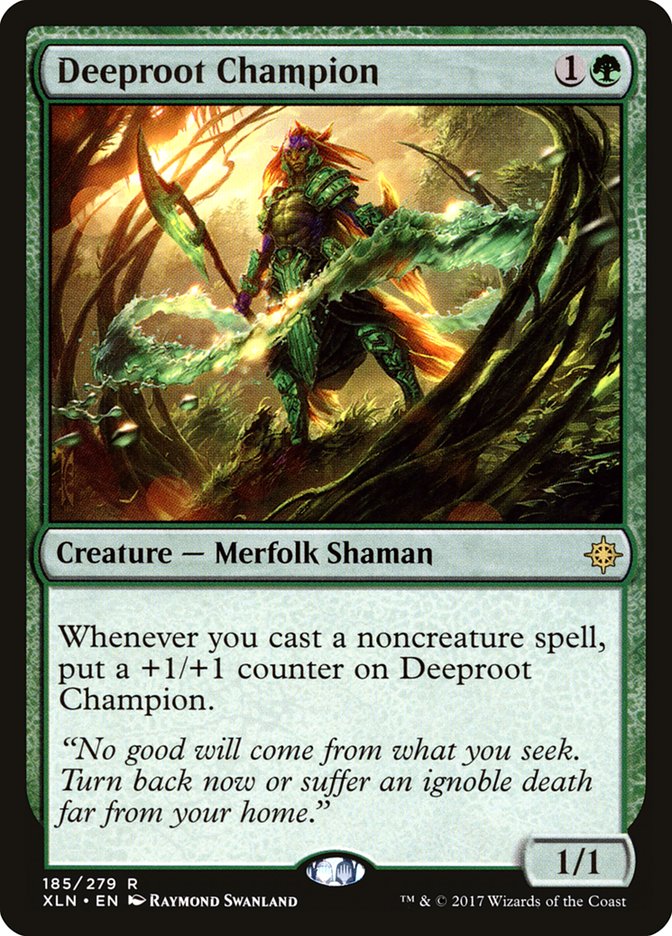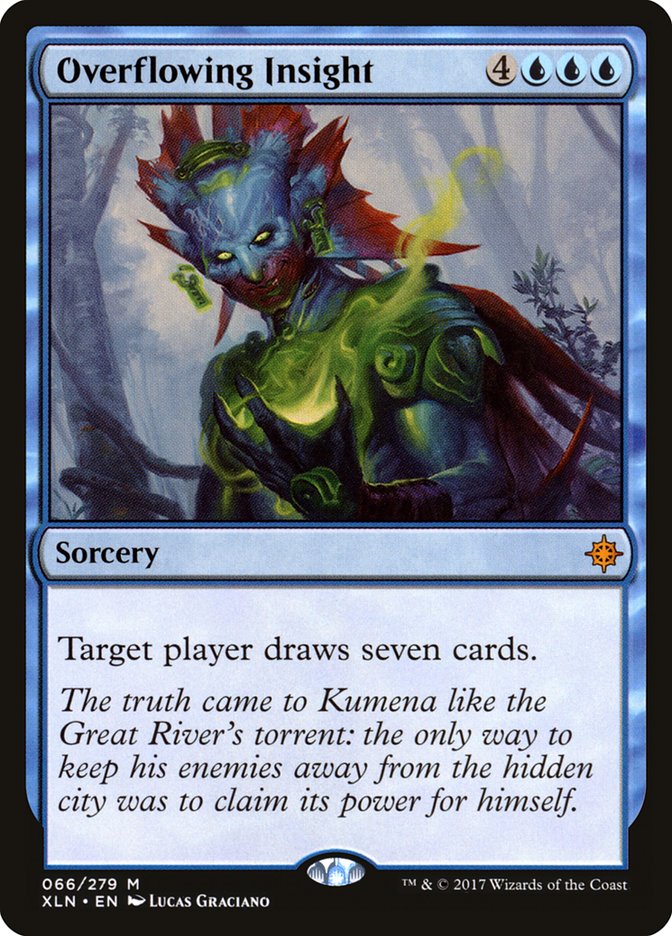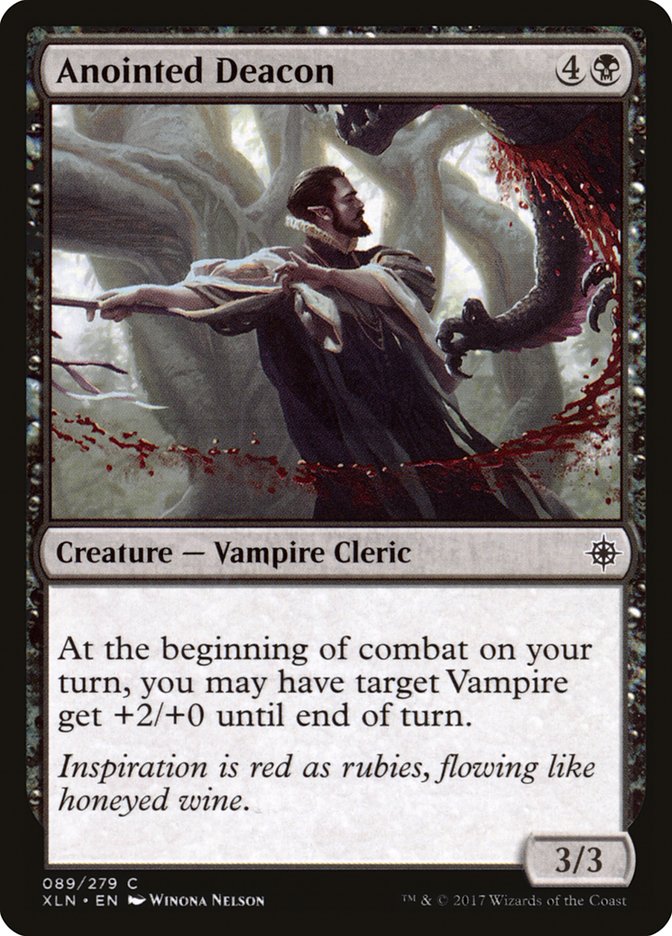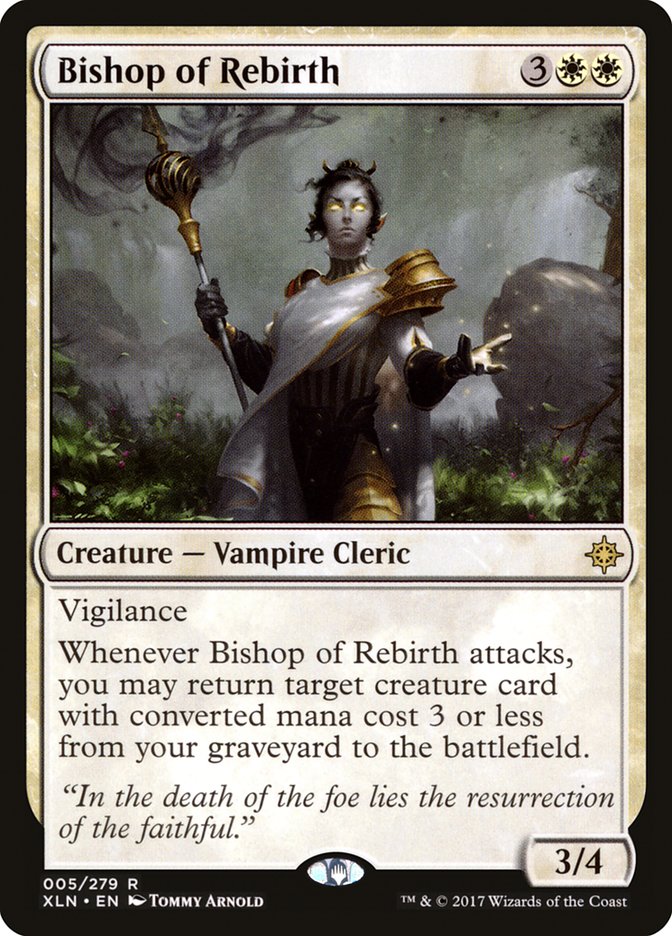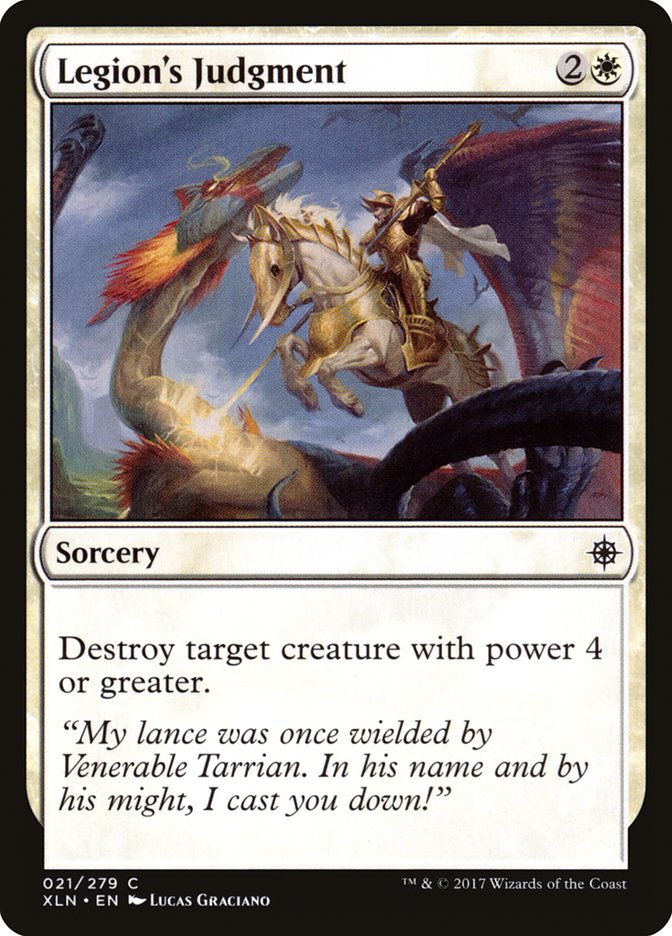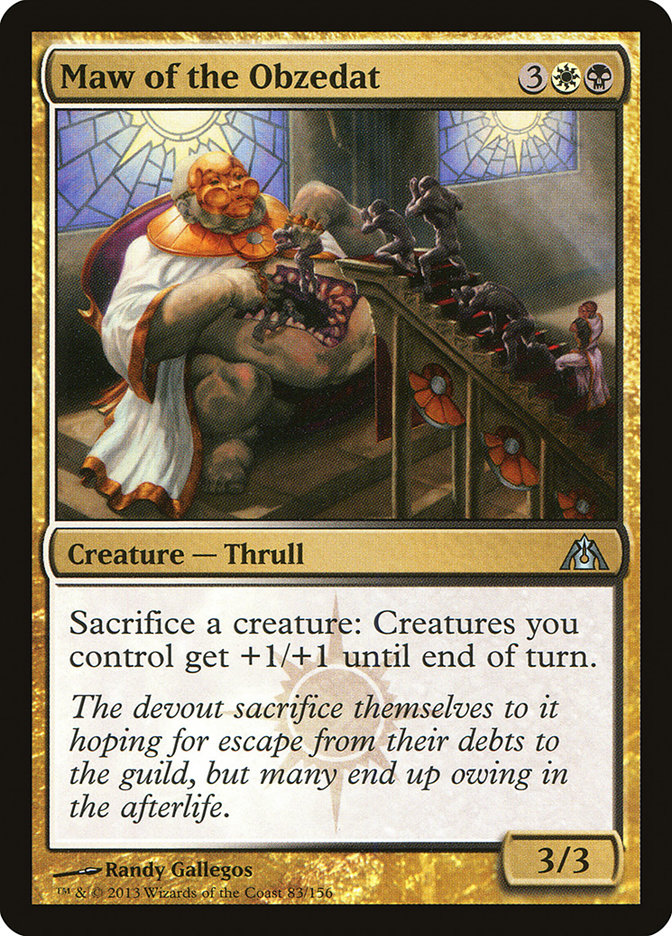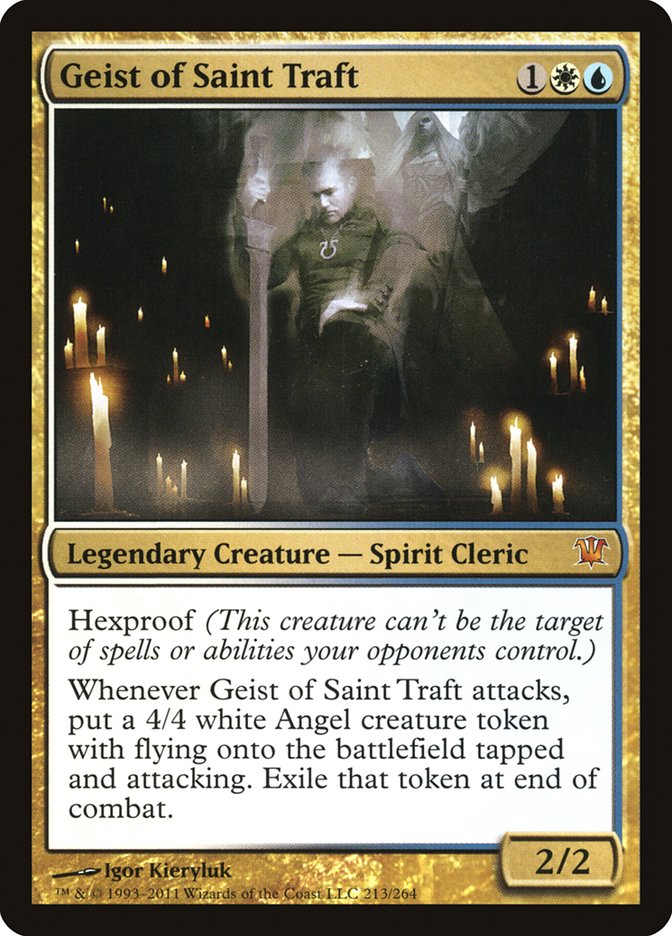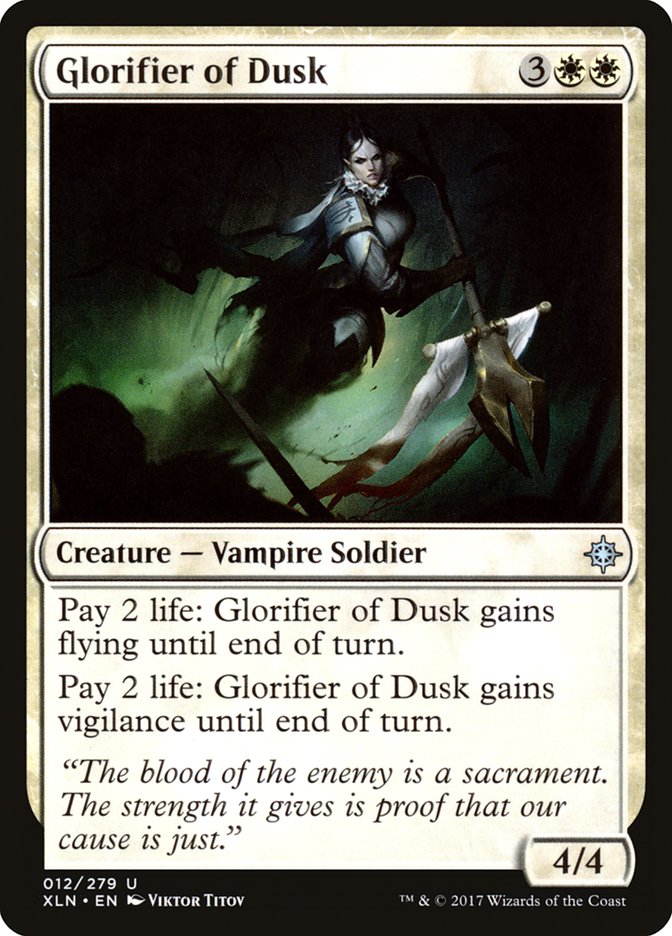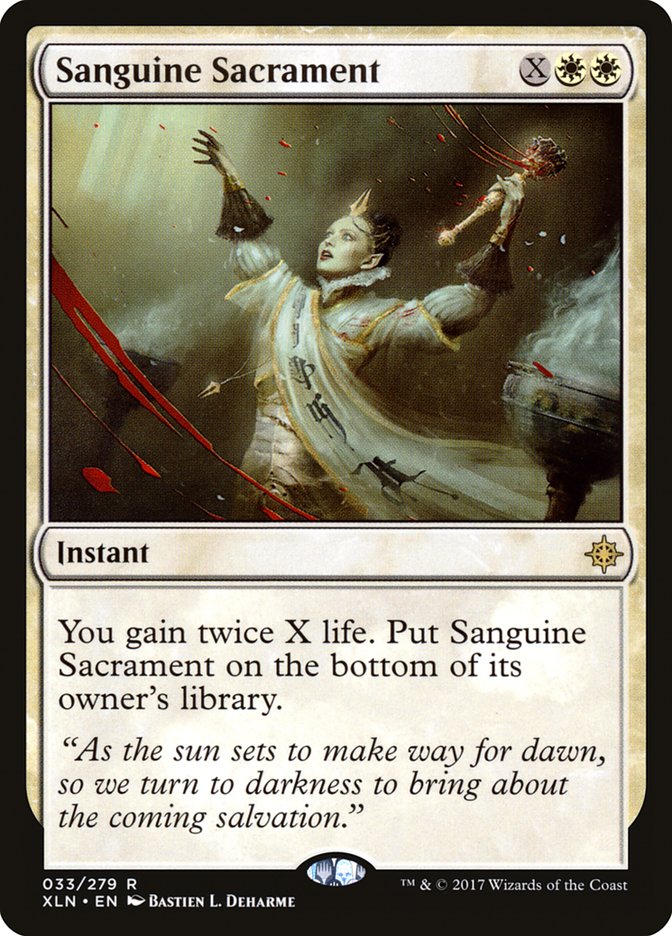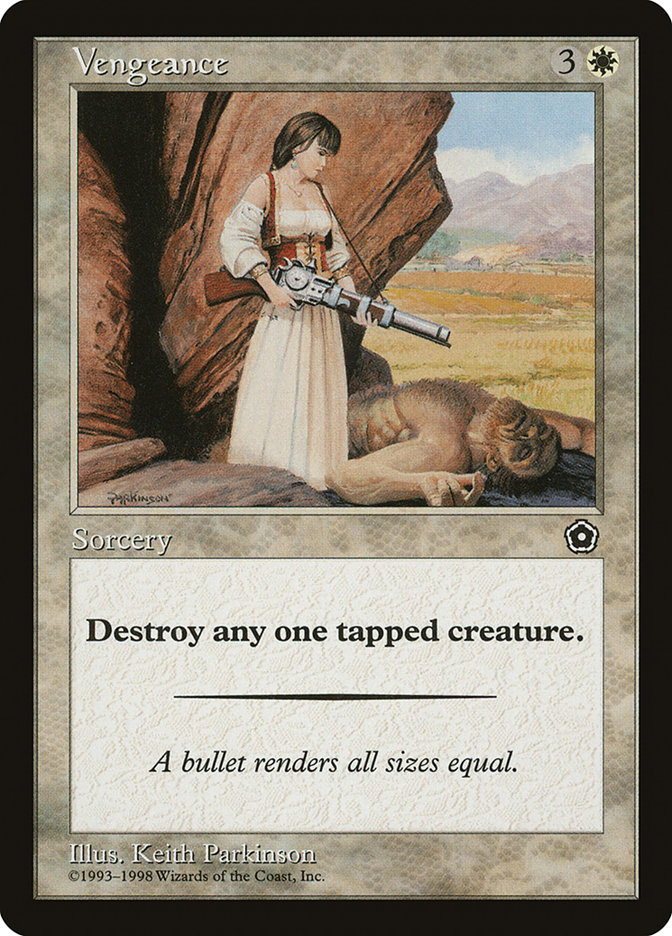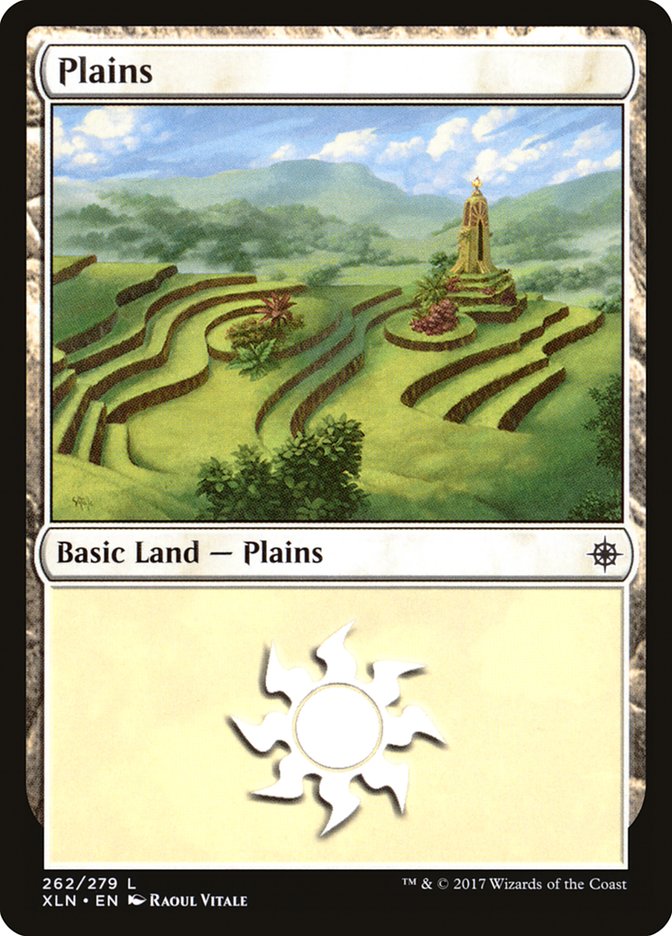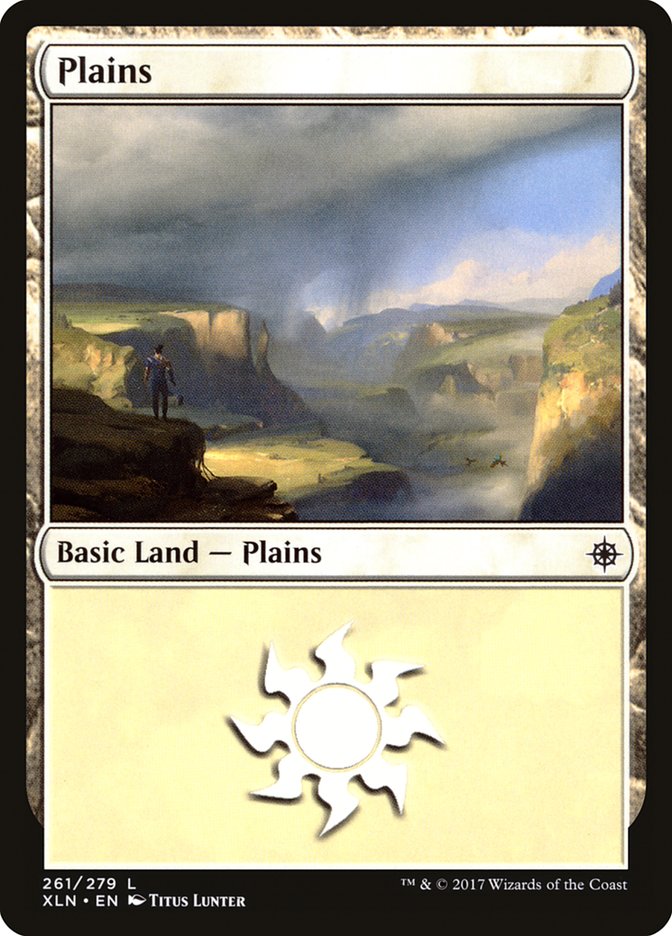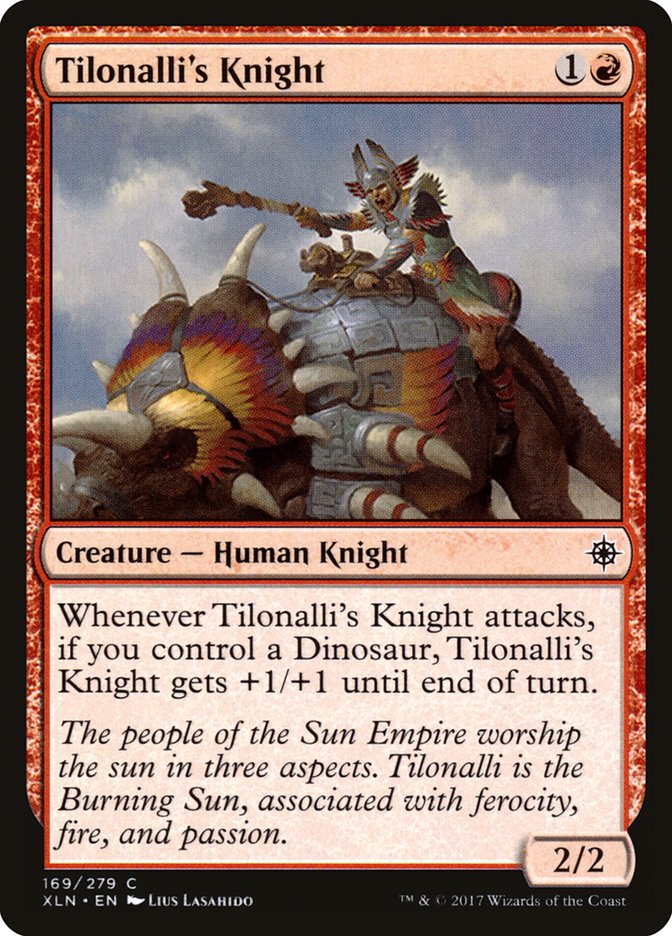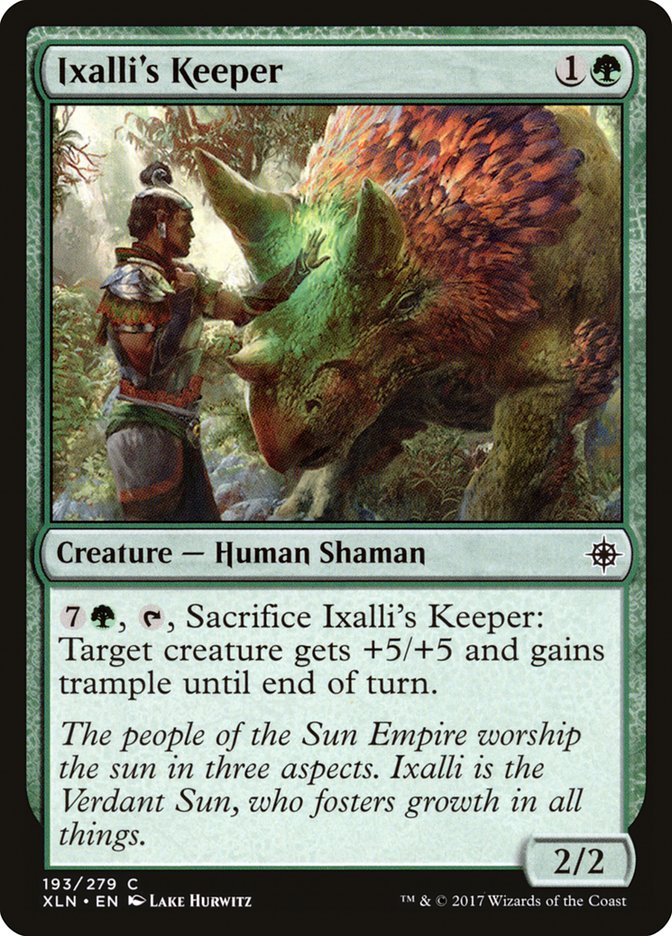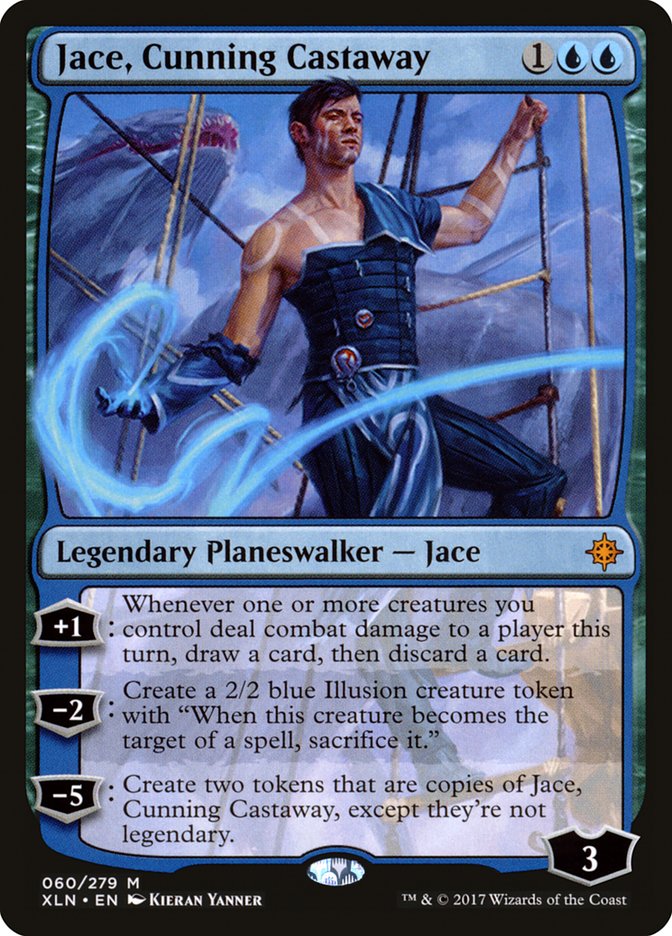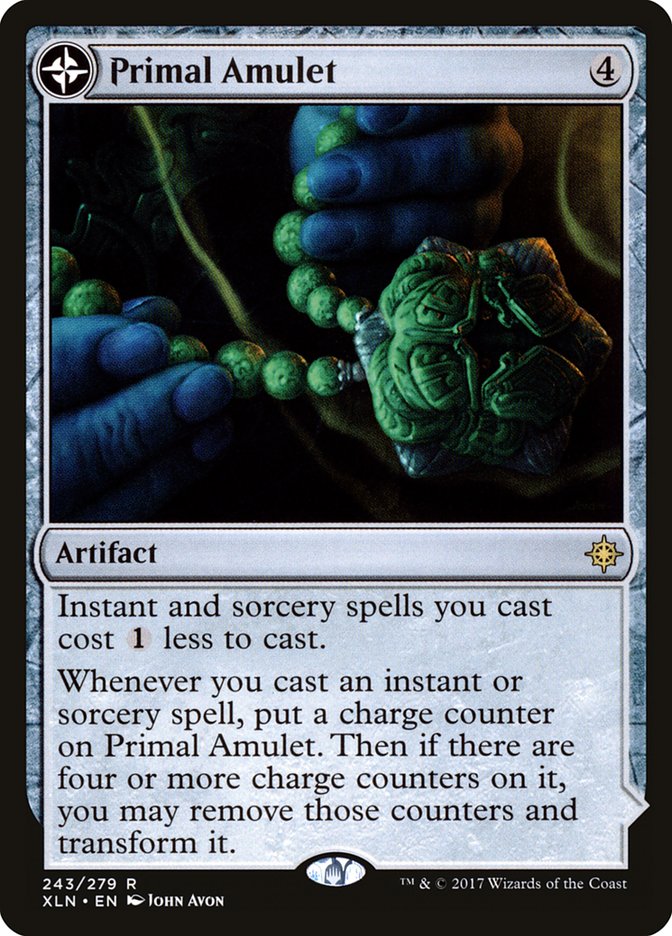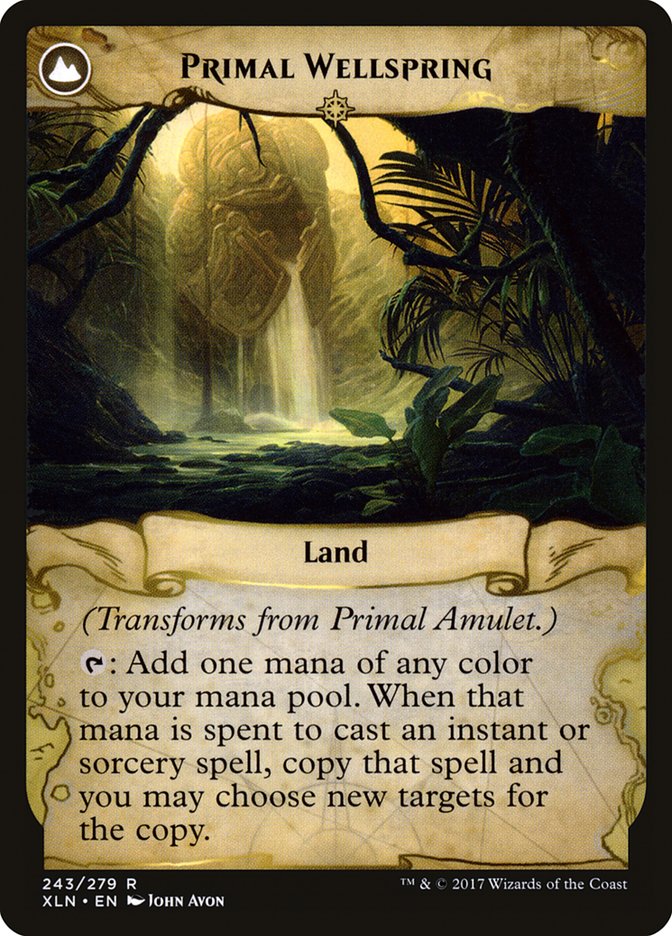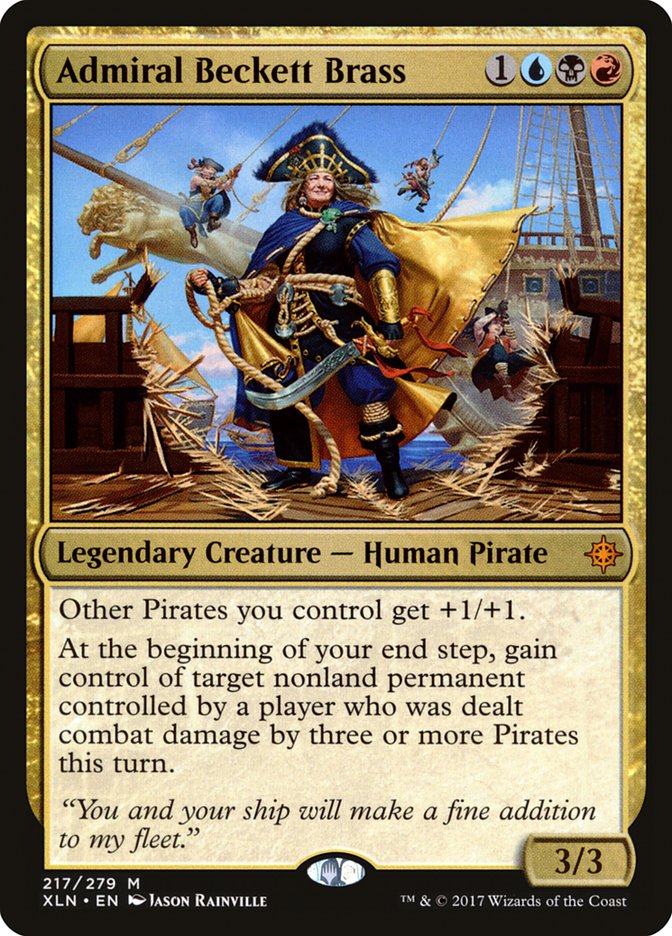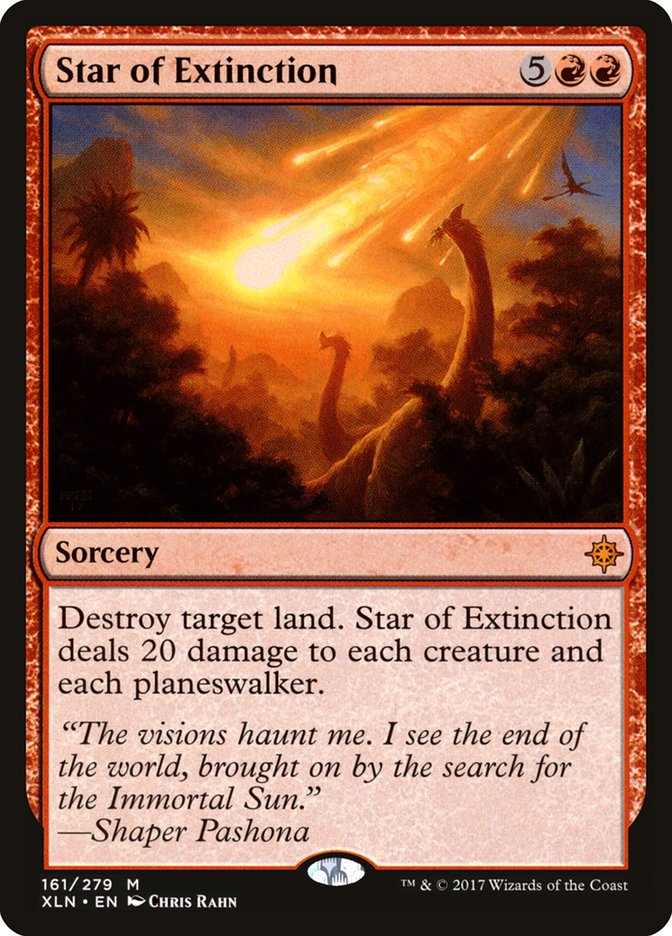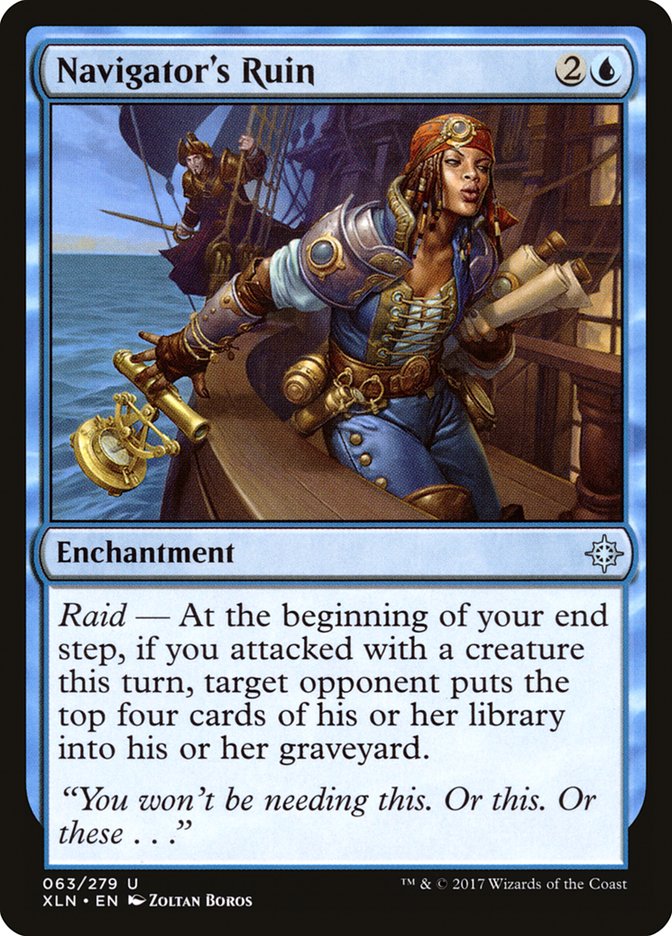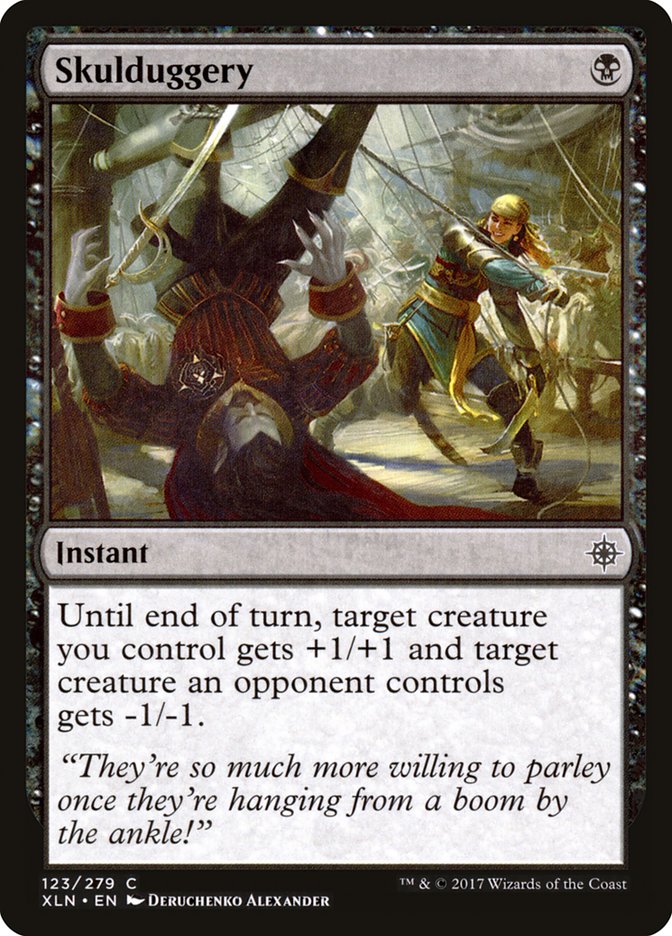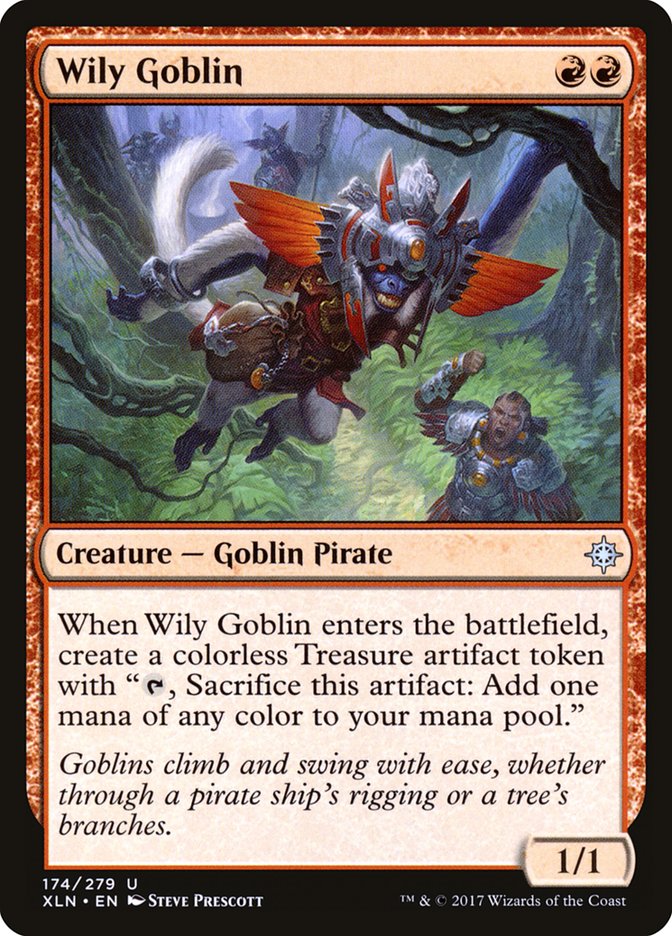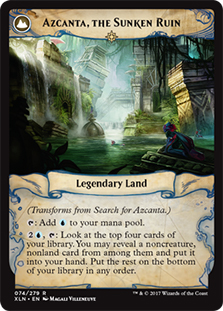A new set means it’s time for a new flavor review! Ixalan is the last large set designed to have a small set follow it, which means it’s subject to some of the pressures that shaped large sets in the past but that will not affect large sets in the future (because they’ll all be large sets…at least until Wizards of the Coast changes its release pattern again).
Most notably, Ixalan is required to perform all the setup work of the block, which Rivals of Ixalan then will pay off, as I wrote about a while ago. Future sets may perform this function for their follow-ups in the post-block model, but Wizards of the Coast could avoid this even for a three-block set, following, for example, the “guild focus” model of the original Ravnica.
I’ll keep this in mind as I explore the flavor of Ixalan.
The Language Is Leaving Me
I already wrote an entire article about phonemes, the units of sound in sets, and how what I’d seen to that point affected my views of Ixalan. I’m happy to report, after seeing the whole set, that my earlier fears of “too much Inca on the wrong continent” were unfounded.
I may still find those phonemes (or visuals, as will be seen later) distracting when they show up, but that’s not enough to make me feel like the setting of Ixalan, which is by Wizards of the Coast’s admission meant to be one continent on a larger plane of the same name, is stretched in space across continents.
I Whiffed It; I Nailed It
Once upon a time (read: 2014), I wrote that Wizards of the Coast doing a Mesoamerican-themed plane was “Not Gonna Happen.” Granted, I was more open to that possibility than some others in the same article, but my prediction was way off:
Further, Wizards wouldn’t take the lazy route and go the “little clothing, lots of human sacrifice Mayincatec world” route for an entire block and its corresponding plane. They’d do the research, stick to one civilization (probably Aztec), and then realize they’d trapped themselves in a hard-to-pronounce, tough-to-truly-understand creative plane with few roads out that would leave their sensibilities undamaged.
Unless Wizards figures out a way to do the “light” version of one of these civilizations’ myths without getting into cheesetastic misinformation territory, Aztec World isn’t going to happen.
Well, they did the research. They went with two “local” civilizations, the Aztec-influenced Sun Empire and the jade-loving, Maya-influenced Merfolk.
On the other hand, I pretty much nailed the Merfolk about a year ago. While my context was different (the article was about how Wizards of the Coast might build a world out of Moby-Dick), here’s what I wrote then:
Meanwhile, beneath the waves, there could be Merfolk united in opposition to these whaling expeditions (“The Whales are not yours to kill!”) and ready to drop a rogue wave on any ship that gets in their sights.
Speaking of the Merfolk, they could be aligned with Magic’s colors blue and green, much as the planeswalker Kiora is: blue for the sea, green for the sea life and the natural harmony of the oceans.
It’s coincidence, of course, but I’ve been smiling all preview season.
Something That Probably Bothers Only Me
What’s more Pirate-themed than gleaming golden treasure coins? Not much! And yet, whenever I see gold coins up close, they’re perfectly round things with raised rims.
In short, they’re machine-made. And machine-made or “milled” coinage was far from the norm in the 1500s, where Ixalan seems to borrow most of its influences. For most of the history of money, the vast majority of coins were “hammered,” which is exactly what it sounds like: a burly brute would literally use a hammer to strike coins one at a time. (For more details, check out this older article of mine.)
So what did the typical hammered coins of the 1500s look like? Take these macuquinas or “cobs,” where the silver was sliced off a bar like the end of a corncob. Or, on Wikipedia’s page for the Spanish dollar, note how irregular the edges are of the topmost coin compared to its 1739 milled counterpart. Even as late as 1715, Spanish coins made in the Western Hemisphere were irregularly shaped to some degree, as shown on the page for the 1715 Treasure Fleet of Assassin’s Creed and Black Sails fame.
So when I see a card like Revel in Riches or the Treasure token above, I get thrown out of the fiction. It’s not a deliberate choice, like putting Dinosaurs on the continent; it’s an error of assumption. While I have no access to the highly confidential Ixalan worldbuilding guide, it wouldn’t surprise me if example coins, perfectly round with their sharp raised rims, were depicted in it and copied over by the artists; otherwise, I would have expected strong artists who do research, like Adame and Deschamps, Ceran and Maier, to find the irregular coins online and incorporate them into the art.
And some of you just asked, “Wait, who’s Ceran?” That’s Milivoj Ceran, one of the five artists making their Standard-legal debuts in Ixalan.
New Artists in Ixalan
Chris Seaman is an artist out of Ohio. He’s been a professional for more than a decade, contributing illustrations to card games like the World of Warcraft TCG and Kaijudo and tabletop systems such as Pathfinder and Dungeons & Dragons. For a good overview of his career, check out his shop for original artworks, which contains a lot of pieces that, frankly, shouldn’t still be there. I mean, there’s a D&D interior illustration and its preliminary drawing for $125 combined! If you’re trying to get into illustration art on a budget, you could do way worse than browsing his offerings.
Dimitar is Dimitar Marinski, a Bulgarian-born illustrator currently working for a UK games company. He does some flat-out amazing environments, and Wizards of the Coast giving a new illustrator five (non-cycle) illustrations for their first set is a massive vote of confidence. Based on what I’ve seen, it was well-earned.
Emrah Elmasli is a British concept artist and founder of Mooncolony, a “boutique entertainment design studio.” While I wouldn’t necessarily have associated his prevailing style with Magic, I’m glad Wizards of the Coast took the chance. Both sides of Conqueror’s Galleon are moody and menacing delights. More, please!
Jonathan Kuo is a concept artist out of California. When Wizards of the Coast concluded that Dinosaurs would be an essential part of Ixalan, it wouldn’t surprise me if the art directors went looking specifically for new artists who had skills there, much like fairytale-inspired illustrators Larry McDougall and Omar Rayyan came onboard for Lorwyn/Shadowmoor blocks. The Dinosaur banner on Mr. Kuo’s ArtStation account surely didn’t hurt him there! I hope he doesn’t get pigeonholed; he can do a lot more than Dinosaurs and I’d like to see how he handles another subject.
Milivoj Ceran is a Croatian artist whose extensive illustration resume includes work on many other major fantasy properties. Like Chris Seaman, he’s finally crossing over from D&D. I tried and failed to get my paws on one of his Magic originals. I’m hoping I get a second chance.
Story Spotlights
The five Story Spotlight cards of Ixalan start with Jace, having fled Nicol Bolas at the end of Hour of Devastation, landing on a plane no planeswalker can leave. This plot beat is covered in the Magic Story installment “Jace, Alone.”
Gorgons gonna Gorgon, and Vraska’s on a mission to recover her MacGuffin as arranged by Nicol Bolas. An interesting side effect of Ixalan’s planeswalker lockdown is that it introduces one-of-their-kind characters to the setting, such as the Gorgon Vraska and the Minotaur Angrath. Vaguely covered by “Jace, Alone” above, but I expect more to come.
While on her quest for the MacGuffin, Vraska runs right into a trap set by Merfolk who don’t want anyone invading the lost golden city of Orazca. Not yet covered by Magic Story.
Onboard with Vraska, Jace follows her Thaumatic Compass to the Spires of Orazca, but still isn’t sure what they’re looking for.
Something bad happens to Jace, and Vraska tries to save him.
So far, the Story Spotlights point to Jace and Vraska finding the lost city but not yet the artifact within. It also indicates a critical moment in the relationship between the two planeswalkers, formerly bitter foes.
The Wider Story
Within the lost golden city of Orazca lies an artifact of tremendous power. What, exactly, it does seems to change based on who covets it.
The Pirates, through Vraska and possibly Angrath, seek Orazca for the artifact within that Vraska came to find…and that just might provide the way out for their planeswalker captains.
The Vampire conquistador freaks from Torrezon think the “Immortal Sun,” an artifact that promises true eternal life instead of undeath, is hidden within Orazca. Think the Fountain of Youth (a legend often associated with Juan Ponce de Leon) being stuffed inside El Dorado and you’ve got the general idea.
Meanwhile, the planeswalker Huatli, having mistaken a vision of Kaladesh for Orazca, is tasked by her emperor with finding the golden city and the Immortal Sun within for the Sun Empire’s glory.
And the Merfolk, displaced but not destroyed former powers of Ixalan and longtime guardians of the secrets of Orazca, have their own seeker of the artifact in Shaper Kumena.
Four factions (with sub-factions), one goal: find the golden city and grab the artifact within. As comedy, it’s the same setup as It’s a Mad, Mad, Mad, Mad World. As drama, it’s The Maltese Falcon or any number of other films. The plot is a classic: set up a thing to be acquired, wind up several competing parties, and watch them go. It’s how the story is embellished that matters.
Vampire Conquistadorks
One of the biggest obstacles to creating Ixalan was getting the “conquistador” faction right. From the transcript of the Ixalan podcast, instead of the historical pattern, the Vampires were actually the ones stolen from (the Immortal Sun was theirs and got taken), and they’re coming to take it back. Are they invaders? Sure. But this isn’t a narrative of cruel plunderers and innocent victims. It’s gray-and-gray.
And the Twilight series continues to ripple through Magic; one of the reasons Innistrad got the green light in the first place, as a pop-culture signifier signaling the coast was clear, it also features Edward Cullen, a Vampire who refuses to feed on Human blood. While Ixalan’s Vampires aren’t animal-blood-only, the Blood Fast (go as long as possible without drinking) and the choice of victims (criminals, heretics, and so on) bring to mind both Twilight’s ethical Vampire and fictional serial killer of serial killers Dexter Morgan.
Seriously, Wizards?
Where I have a problem with the Vampires is the way Wizards of the Coast “adapted” Roman Catholicism for the Vampires’ religion. For all their declarations about respecting real-world cultures and faiths, it didn’t happen here.
The Vampire squad borrows the language of Roman Catholicism. There may not be any crosses running around (aside from Wizards of the Coast’s real-world symbol ban, there’s precious little evidence of the Church of Dusk’s deity or deities, if any, on the cards), but there’s no room to act innocent when there are bishops and deacons running around and Legion’s Judgment gives a weapon’s past wielder the title “Venerable,” the second of four steps on the Catholic path to sainthood.
Now, Wizards of the Coast has done the churches-without-Christianity thing before, in both Catholic (Orzhova, the Church of Deals on Ravnica) and Protestant (the Church of Avacyn on Innistrad) flavors. But the Church of Dusk on Ixalan goes way beyond borrowing architectural trappings, some words, and a hierarchy.
The repeated use of the word “sacrament” and the substitution of literal blood for wine (with a chalice, no less!) make a mockery of the real-life sacrament of the Eucharist and the doctrine and mystery of transubstantiation, by which, in Catholic teaching, the sacramental bread and wine become the body and blood of Jesus Christ.
I’ve gone to church with my aunt and uncle, devout Catholics. I’ve seen how meaningful the Eucharist is to them and to their fellow believers. It’s not some dusty Gothic ruin. It’s an essential part of their living faith, renewed at every service.
It just astounds me that Wizards of the Coast, for all its demonstrative concern about the atua of indigenous Polynesian faiths, could be so utterly insensitive to the faith of a billion.
Pirate Cannons (Is That a Gun?)
A few years back, I wrote an article in part about the lack of guns in Modern-era Magic. Innistrad? No guns. Ravnica? No guns. But on Ixalan? That looks like a gun in the background…
It’d be hard to imagine a Pirate faction without cannons, and Ixalan brings the boom tubes on cards like Lightning-Rig Crew and Makeshift Munitions. Magic makes exceptions for both Goblins and magically fueled weapons, so both those cannons are probably safe.
It wouldn’t surprise me if one could hand-wave a pistol-sized weapon as magical as well. Or maybe an artist new to Magic didn’t know not to include it and it slipped past. Either way, I don’t think we’re going to see anything on the order of Portal Second Age’s firearms in Rivals of Ixalan.
Ten Notable Cards, Cycles, and So On
As gorgeous as the terraced Plains is, it feels like a mistake in the context of Ixalan. I would’ve rather seen it in an Inca-focused world. And while it’s uncommon to have recognizably Human figures in landscape art, the cycle of “tiny Jace” lands have precedents such as this John Avon piece.
It’s rare that a cycle of cards with such an unwavering formula to their flavor text can feel so fresh and effective at worldbuilding. Well done to whoever wrote these!
Ixalan commits to reinventing Jace. The art for Jace, Cunning Castaway with its symbolic shedding of his previously ubiquitous cloak really embodies the theme of “I can choose who I want to be.”
If you want to write flavor text for Wizards of the Coast, start practicing your one-liners and get this good before you apply.
John Avon pieces are increasingly rare in Magic, but they’re treasures when they appear. And while I’m glad the well-designed and highly evocative “flip side” design of the double-face cards will appear in more booster packs than Masterpieces would’ve, I can still shake my head at the lost opportunity.
I’ll let the artist speak for himself:
Admiral Beckett Brass, AD Cynthia Sheppard.
Admiral of the pirate fleet… and my mom 😀 Finally got to put her in a painting 🙂 #MTGXLN pic.twitter.com/HOlbmH1mcA
— Jason Rainville (@rhineville) August 28, 2017
I’d say Winona Nelson has the “awestruck background character” niche on lockdown.
The “meteorite killing the dinosaurs” meme has spread far and wide by now, but guess where many scientists think it happened: the Chicxulub crater, just off Mexico’s Yucatan peninsula.
While humor in Magic isn’t as abundant as I’d like it to be, the Pirates of Ixalan have their share…and they greedily keep it to themselves.
While Atlantis comes from a European tradition, there is an analogous location just off the coast of Cuba that has led to speculation. Intriguing!
Ixalan Way to Tipperary
And after all that, I still haven’t covered every flavorful card in Ixalan! What’s your favorite?


